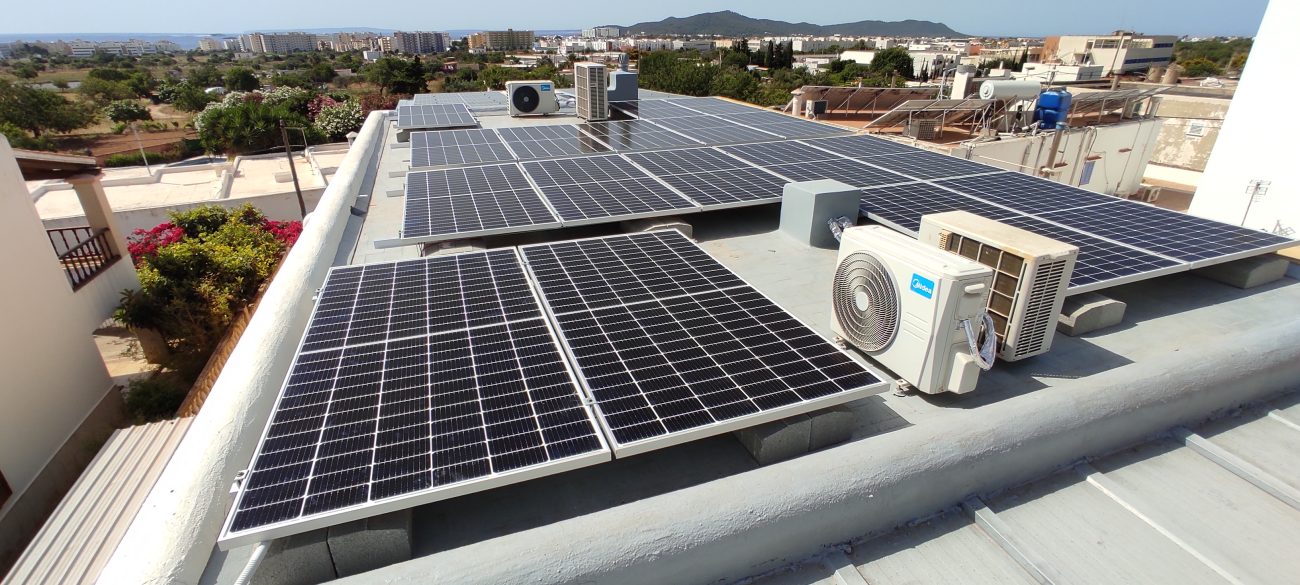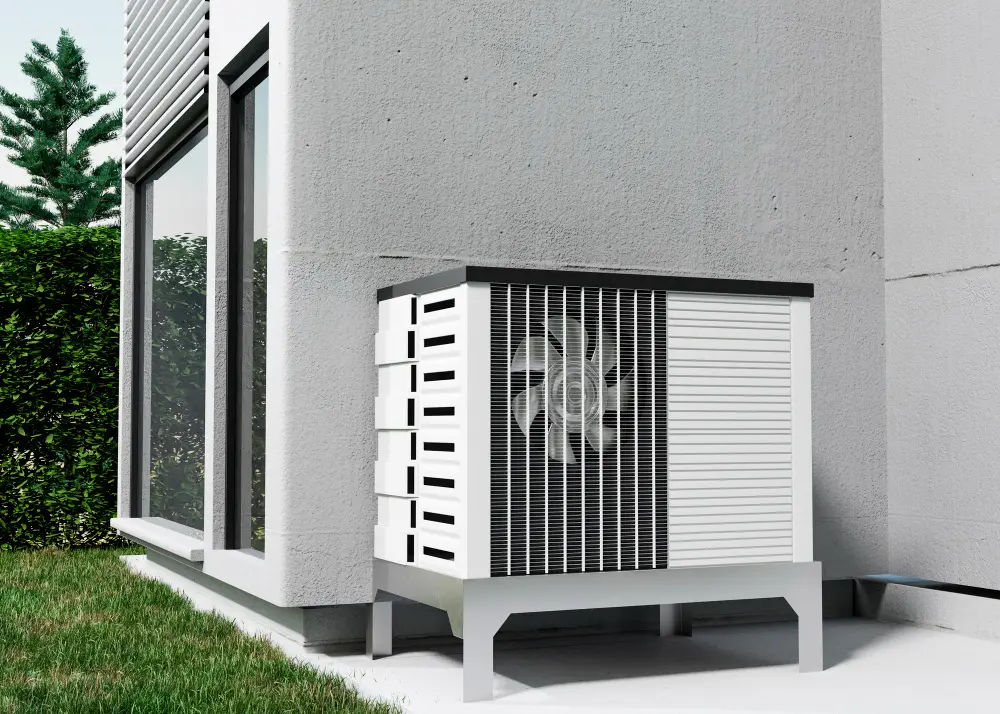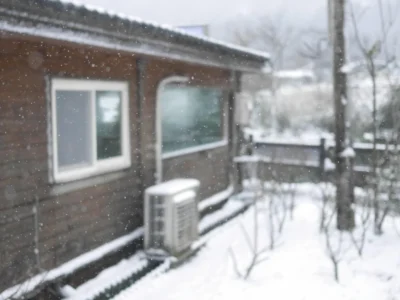An air source heat pump (ASHP) can provide efficient heating and cooling when installed correctly, but its performance depends heavily on where it’s placed. Choosing the right location for both the outdoor unit and indoor components ensures good airflow, low noise, and long-term reliability.
In this post, we will understand the main considerations when choosing the right location for an ASHP.
Where Can You Install an Air Source Heat Pump?
Can air source heat pumps be installed indoors? Some of the components can be installed indoors, while the outdoor unit should, as its name indicates, be placed outside.
Outdoor Unit Placement Basics
The outdoor unit (or condenser) extracts heat from the outside air and transfers it indoors through refrigerant pipework. To properly function, it must be installed in an area with free airflow, away from obstructions. Proper placement also prevents performance loss and ensures efficient defrost cycles during cold weather.
Suitable Locations: Wall, Ground, or Roof
ASHP outdoor units can be installed on the ground (using a stable concrete pad or mounting frame), on the wall (using mounting brackets), or on the roof (after checking the structure can handle the weight).
Every option requires vibration-damping pads or mounts to reduce sound pressure level (dB[A]) and avoid transferring noise to the building.
Orientation and Access for Maintenance
Ideally, the outdoor unit should face away from winds to prevent debris buildup and excessive defrosting. It should also have clear access for installation and maintenance.

Space Requirements for Air Source Heat Pumps
Minimum Clearance Around the Unit
Manufacturers typically specify the minimum air source heat pump distance from the wall. This is often between 30 and 50 cm on the sides and back and at least 1 meter on the front.
Distance from Walls, Fences, and Obstacles
Avoid placing the unit too close to walls, fences, hedges, or corners, as restricted airflow can cause overheating and reduce Coefficient of Performance (COP).
Airflow and Ventilation Considerations
Good ventilation ensures optimal airflow rate and prevents the buildup of cold exhaust air around the unit.
Noise and Neighbor Distance Regulations
Sound Level Limits in Residential Areas
The air source heat pump distance from neighbours is often regulated by municipalities.
Recommended Distance from Windows and Bedrooms
Install the outdoor unit at least meters from windows, bedrooms, or living areas to minimise noises.
Local Regulations and Planning Permissions (UK/EU)
In the UK, most ASHPs fall under permitted development rights, but only if they meet conditions regarding noise, size, and distance from property boundaries. In the EU, similar planning rules and Building Regulations Part L may apply. It is recommended to always check with local authorities before installation.
Indoor Unit and Pipework Considerations
Placement of Hydrobox, Buffer Tank, and Cylinder
The indoor unit (hydrobox), buffer tank, and hot water cylinder should be installed in a utility room, plant room, or garage with enough ventilation and drainage and should be accessible for maintenance tasks.
Pipe Length and Refrigerant Line Limits
Manufacturers specify a maximum refrigerant pipe length, often between 15 and 30 meters, to prevent efficiency losses.
Ease of Access for Servicing
Ensure there’s sufficient space for maintenance, checking valves, filters, and expansion vessels.
Ground and Surface Requirements
Stable Base and Vibration Pads
The outdoor unit must sit on a stable, level base that can bear its weight. Use vibration pads or an anti-vibration frame to reduce noise transmission.
Avoiding Flood-Prone or Dusty Areas
Avoid installing in flood-prone areas or near dusty driveways to avoid damages.
Protection from Debris and Snow
In colder regions, place the unit at least 30 cm above ground level to prevent snow buildup.
Factors That Influence Installation Location
Climate and Orientation (North vs South-Facing Walls)
A south-facing wall typically offers the best thermal conditions, improving heat absorption and reducing defrost cycles. However, in hot climates, shaded or north-facing locations can help prevent overheating during summer.
Shading, Wind, and Rain Exposure
Strong winds, heavy rain, or direct sunlight can affect system efficiency. Choose a semi-sheltered spot that provides natural protection without restricting airflo.w
Distance to Electrical Panel and Water Circuit
Placing the unit close to the electrical supply and water circuit minimises installation costs and heat loss.

Common Mistakes to Avoid
Installing Too Close to a Wall or Corner
A common error is mounting the outdoor unit directly against a wall or in a corner, which restricts airflow and increases noise reflection.
Blocking Air Intake or Exhaust Flow
Never block the intake or exhaust sides of the unit.
Ignoring Manufacturer’s Clearance Guidelines
Each model has specific spacing requirements. Ignoring them can void the warranty or lead to poor performance.
Final Recommendations for Optimal Performance
Consult Accredited Installers
Always work with certified professionals who are familiar with air source heat pump systems and local building codes. Accredited installers ensure correct electrical connections, refrigerant handling, and compliance with regulations.
Check Manufacturer’s Installation Manual
Follow the manufacturer’s installation manual carefully.
Regular Maintenance and Seasonal Checks
Schedule regular inspections to clean filters, check refrigerant pressure, and remove debris to extend the lifespan of your ASHP.







